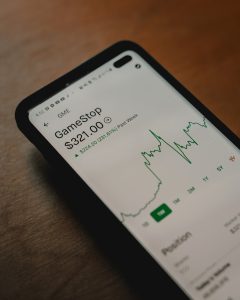The foreign exchange market, also known as the forex market, is the largest financial market in the world. It is a decentralized market where currencies are traded 24 hours a day, 5 days a week. The forex market is characterized by high liquidity, volatility, and transparency. When trading forex, traders need to understand the concept of the bid-ask spread, also known as the buy-sell spread, which determines the gap between sell and buy prices.
The bid-ask spread is the difference between the highest price a buyer is willing to pay for a currency (the bid price) and the lowest price a seller is willing to accept (the ask price). The bid price is always lower than the ask price, creating a gap between sell and buy prices. This gap represents the transaction cost of trading forex and is how market makers make a profit.
There are several factors that determine the gap between sell and buy prices in forex. These include liquidity, volatility, supply and demand, and transaction costs.
Liquidity
Liquidity is the ease with which a currency can be bought or sold without affecting its price. In a liquid market, there are many buyers and sellers, and orders can be executed quickly at the current market price. In an illiquid market, there are few buyers and sellers, and orders may not be executed at the desired price, or at all.
The bid-ask spread tends to be narrower in liquid markets and wider in illiquid markets. This is because in a liquid market, there is more competition among market makers, reducing the spread. In an illiquid market, market makers may have more control over the spread, widening it to compensate for the risk of holding inventory.
Volatility
Volatility is the degree of price fluctuation in a currency pair. When a currency pair is volatile, the bid-ask spread tends to widen. This is because market makers need to account for the risk of price movements and adjust their prices accordingly.
For example, during a major news event, such as an interest rate decision or a political announcement, the bid-ask spread may widen significantly due to increased volatility. Traders must be aware of this and adjust their strategies accordingly.
Supply and Demand
Like any market, the forex market is subject to the forces of supply and demand. When there is more demand for a currency pair than supply, the price tends to rise, and vice versa. This affects the bid-ask spread because market makers need to adjust their prices to reflect the current supply and demand.
For example, if there is high demand for a currency pair, market makers may widen the spread to discourage buyers and encourage sellers, reducing their own risk. If there is low demand, market makers may narrow the spread to attract buyers and stimulate trading volume.
Transaction Costs
Transaction costs refer to the fees and commissions charged by brokers and other intermediaries for executing forex trades. These costs can vary widely depending on the broker, the size of the trade, and the type of account.
The bid-ask spread is one of the primary transaction costs of trading forex. Market makers make a profit by buying at the bid price and selling at the ask price, pocketing the difference as their profit. This means that traders pay a slightly higher price to buy a currency than they receive when selling it, creating the spread.
Conclusion
The bid-ask spread is an important concept in forex trading, representing the transaction cost of buying and selling currencies. The spread is determined by a variety of factors, including liquidity, volatility, supply and demand, and transaction costs. Understanding these factors is essential for successful trading in the forex market. Traders should choose a broker with competitive spreads and be aware of the spread when executing trades. By understanding the bid-ask spread, traders can make informed decisions and manage their risks effectively.





